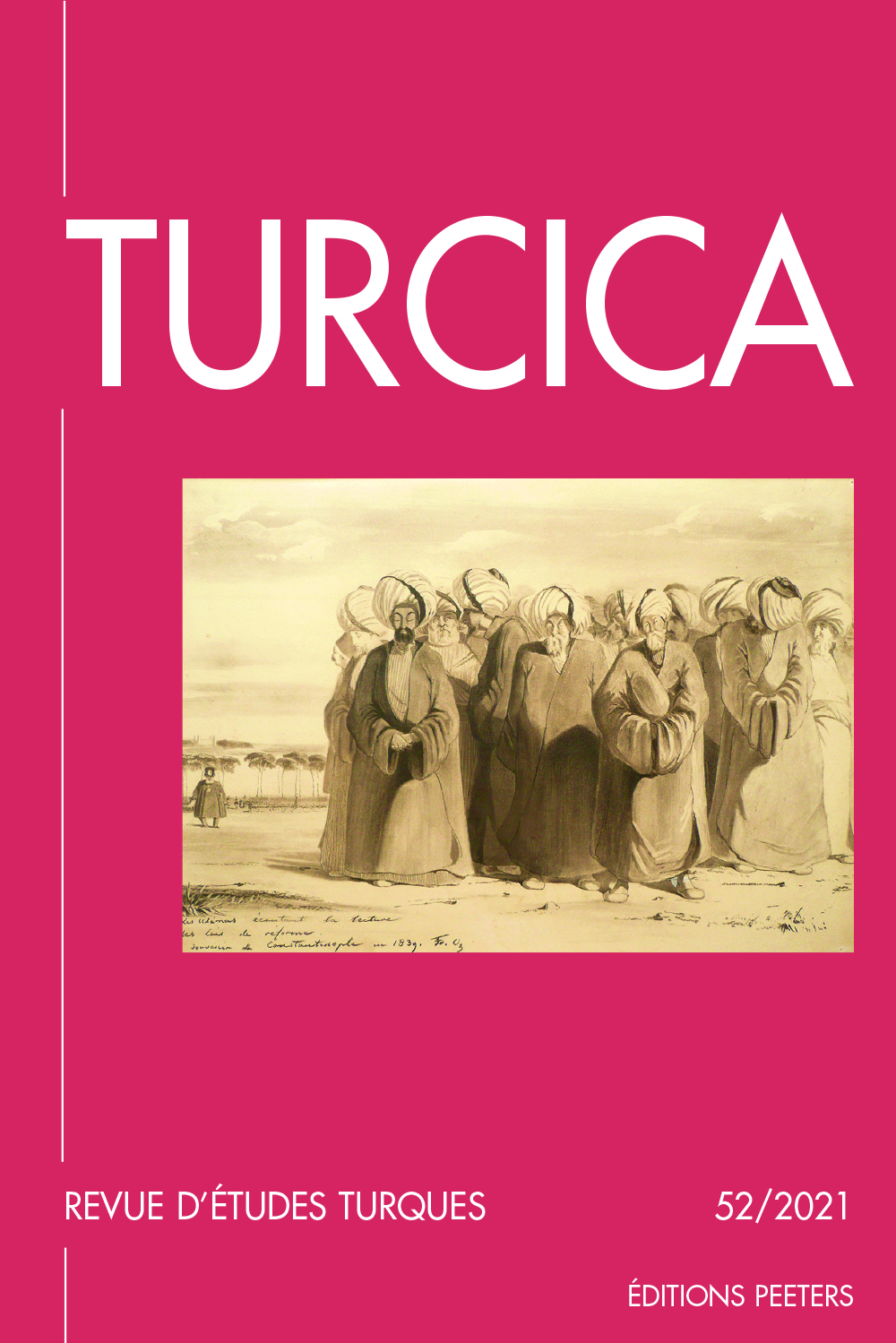 previous article in this issue previous article in this issue | next article in this issue  |

|
Document Details : Title: Un grand vizir dans son palais Subtitle: Édition d'un inventaire de fin d'exercice (1785) Author(s): BOUQUET, Olivier Journal: Turcica Volume: 51 Date: 2020 Pages: 163-217 DOI: 10.2143/TURC.51.0.3288388 Abstract : L’article propose la transcription et l’étude d’un inventaire des biens et objets du grand vizir Halil Hamid Pacha dressé à la Sublime Porte la suite de sa révocation survenue le 31 mars 1785. Il repose sur une distinction rarement formalisée par les spécialistes: la source n’est pas un inventaire après décès; c’est un inventaire de fin d’exercice. Les objets inventoriés sont en effet rapportés aux officiers qui en ont la charge pour certains d’entre eux et aux pièces où ils se trouvent au sein de l’hôtel du vizir pour les autres. Il donne à voir un espace que nous connaissons peu et mal: les appartements du grand vizir. Il éclaire d’un jour nouveau le fonctionnement de sa maison et l’organisation de son harem. L’histoire de la Sublime Porte est dominée par l’analyse des institutions; ses employés sont étudiés au prisme des hiérarchies, des carrières et des traitements. Il s’agit ici d’envisager l’univers du grand vizir dans sa plus directe matérialité. L’opération est à la fois nécessaire et difficile. Car si les spécialistes disposent désormais de quantité de catalogues d’exposition et d’études monographiques, ils manquent cruellement de dictionnaires des objets. Alors que les paléographes sont restés centrés sur la lecture et la transcription de leurs registres, les historiens de l’art ont apporté une lumière précieuse sur l’environnement domestique et la culture matérielle des officiers et des serviteurs. Avec des apports et des limites des deux côtés: les premiers ont progressé dans la compréhension des inventaires de biens, mais ont tardé à les aborder autrement que comme éléments de procédures administratives et comptables; les seconds ont proposé des analyses certes précises des anciens trésors palatiaux puis des collections privées constituées depuis vingt à trente ans, mais sans les rattacher assez aux structures socio-économiques ottomanes. Cet article propose de conjuguer ces deux perspectives, afin que des «carrières d’objets» soient reconstituées et que l’histoire des arts de faire, à peine engagée, rejoigne celle, plus avancée, des productions et des consommations. The article offers the transcription and the study of an inventory of the furniture and objects kept at the Sublime Porte following Grand Vizier Halil Hamid Pasha’s dismissal on March 31, 1785. Following a distinction that specialists rarely consider, the source is not a probate inventory; it is an ending inventory, in this case the end of a mission. Objects and furniture are either reported to officers who were responsible of them or associated with the rooms where they were located. Therefore, the study of this source gives access to a space that we barely know: the apartments of the Grand Vizier. It sheds a new light on the functioning of his house and the organization of his harem. The history of the Sublime Porte has long been dominated by institutional studies and addressed through hierarchies, careers and salaries. The present study tries to consider the universe of the Grand Vizier in its most direct materiality. The operation is both necessary and difficult. If specialists now have a great deal of exhibition catalogues and monographic studies at their disposal, they are desperately short of dictionaries of objects. Moreover, while palaeographers have remained focused on reading and transcribing their records, art historians have brought valuable insights into the domestic environment and the material culture of officers and servants. The first have made progress in understanding asset inventories, but have been slow to approach them other than as elements of administrative and accounting procedures. The latter have scrutinized ancient palatial treasures and private collections gathered during the last twenty to thirty years, without sufficiently linking them to Ottoman socio-economic structures. This article proposes to combine these two perspectives, so that 'careers of objects' may be reconstituted and that analytical approaches of arts of doing may join history of production and consumption. |
 |
